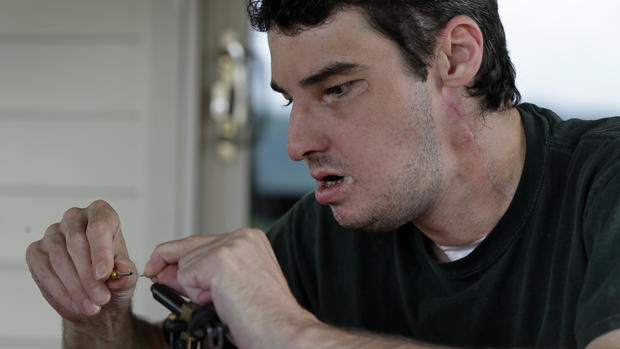Man with face transplant meets sister of his donor
A man who had a face transplant three years ago has met the sister of his donor for the first time.
Rebekah Aversano's brother, Joshua, died in a car accident in 2012 and the family agreed to donate his face to Richard Lee Norris for what was the world's most extensive face transplant at the time.
The two recently met as part of a segment for 9News Australia's "60 Minutes" television show (which is not affiliated with CBS). The meeting was the first time Aversano saw her brother's face on Richard Lee Norris. In a video clip released by 9News, she asked to touch his face and said she felt like it was the one she'd grown up with.
For Norris, who suffered a shotgun wound that destroyed the lower half of his face and bone structure, the massive 36-hour plastic surgery brought an end to 15 years of multiple grafts and smaller surgeries, inability to eat or speak and a very reclusive life.
Gwen Aversano, Joshua's mother, who has also met Norris, said in an interview with Canada's CTV that the family agreed together to donate the 21-year-old's face. Their decision provided Norris with a healthy new face from scalp to neck, including teeth, tongue, nerves and soft tissue that mostly function like a normal face.
Doctors are cautious about the emotional toll of donor families meeting recipients, since families may feel strong reactions seeing the face of a deceased relative on another person.
Facial transplants carry many challenges for the recipients. They must remain on immune-suppressing drugs for their whole lives so their bodies don't reject the transplant, and they need extensive physical therapy to gain control of the facial muscles, to be able to speak and eat.
"Our goal for Richard from the beginning was to restore facial harmony and functional balance in the most aesthetic manner possible through the complex transplantation of the facial bones, nerves, muscles, tongue, teeth and the associated soft tissues," Dr. Eduardo D. Rodriguez after the surgery took place in 2012 at the University of Maryland Medical Center. Dr. Rodriguez is currently the chair of plastic surgery at NYU Langone Medical Center in New York City.
Most facial transplant candidates come to the operating table severely disfigured either from accidents or violent crimes. For them, the idea of a normally functioning face that will allow them to smell, taste, eat and talk -- not to mention the emotional benefit of walking through life without inviting stares -- far outweighs the risk.
Norris was the 23rd facial transplant recipient in the world since the first procedure was done in 2005. There have now been 27 total, and 23 have survived.
